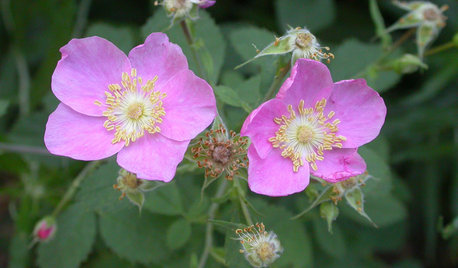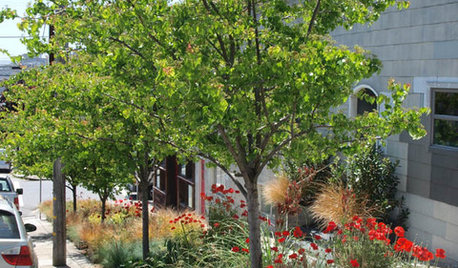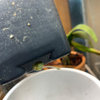Trading cuttings and Rose Propagation
generator_00
15 years ago
Related Stories

WINTER GARDENINGPruning Secrets for Exquisite Roses
Encourage gorgeous blooms year after year with this time-tested advice on how to prune your rosebush in winter for health and shape
Full Story
GARDENING GUIDES6 Wonderfully Easy Roses for Any Gardener
Look like an expert even if you're just starting out, with these low-maintenance gems of the rose world
Full Story
GARDENING GUIDESGreat Design Plant: Rosa Californica
Plant California wild rose for easy care and a touch of romance in your native garden
Full Story
CURB APPEALTake Your Hell Strip to Heavenly Heights: 8 Design Ideas
Trade weedy dirt and trash for a parking strip filled with wispy grasses, low-growing flowers and textural trees
Full Story
MOST POPULARHouzz TV: Fred MacMurray’s Enduring Farmhouse Retreat
One of the most beloved actors of the 20th century traded fame for farm implements on this California ranch. His daughter shows us around
Full Story
LANDSCAPE DESIGNTry Slow Gardening for Some Unexpected Benefits
Why set your garden on the fast track? Here's how to relax and enjoy it in an entirely new way
Full Story
PLANTING IDEASWant a More Colorful, Natural Garden? Try a Perennial Meadow
Spend less time tending and more time taking in the sights by improving on Victorian and prairie garden designs
Full Story
COLOROrange in the Garden: Do You Dare?
Tangerine and other oranges are boldly cavorting from fashionable interiors to outdoor rooms. See some in-vogue examples here
Full Story
SPRING GARDENINGEnjoy the Peak of Spring Gardening — Here’s What to Do in May
Bid the frost farewell and treasure the blooms. No matter what U.S. region you’re in, one of these guides will help your garden flourish
Full StorySponsored
More Discussions





User
mad_gallica (z5 Eastern NY)
Related Discussions
Need a Bulllet-Proof way to Propagate Cuttings from NOID Rose
Q
Crepuscule rose cut wanted :: Trade for Secret Garden Musk cut
Q
Rose cutting propagating list
Q
Heirloom/Antique Roses and Rose Cuttings for Trade
Q
generator_00Original Author
mad_gallica (z5 Eastern NY)
Annie
User
lucretia1
User
generator_00Original Author
User
mad_gallica (z5 Eastern NY)
generator_00Original Author
rjlinva
lucretia1
hartwood
nod702
hartwood
generator_00Original Author
nod702
generator_00Original Author
generator_00Original Author
clc70
nastarana
jerryngeorgia31557